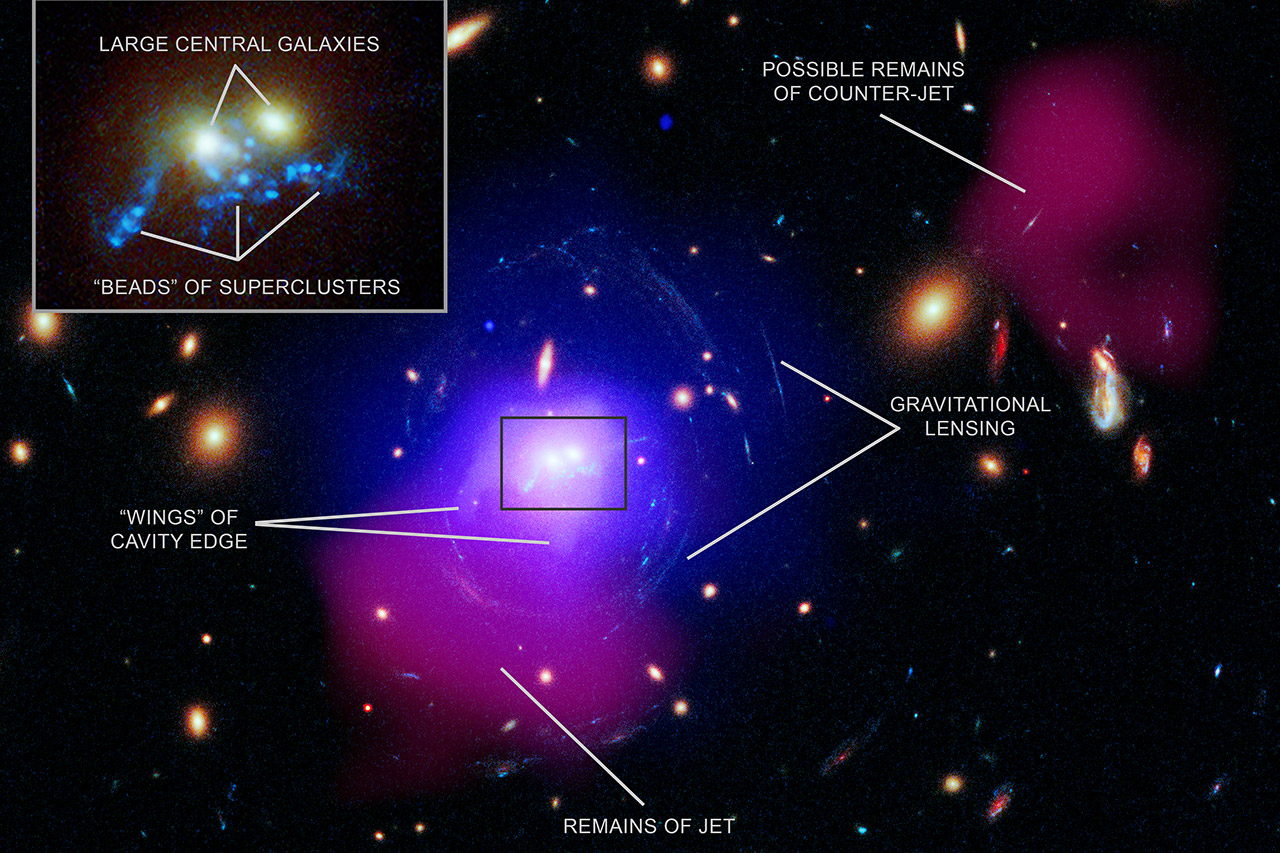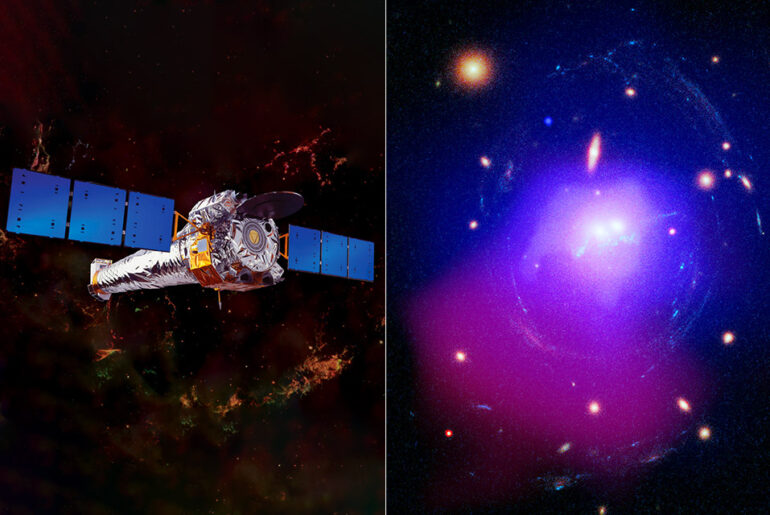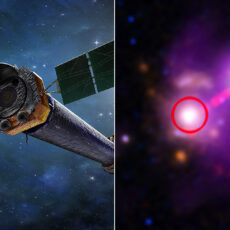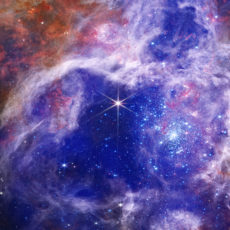
NASA’s Chandra X-Ray Observatory has detected the most powerful black hole eruption yet in the star system known as SDSS J1531+3414. This massive galaxy cluster, located 3.8 billion light-years from Earth, contains hundreds of individual galaxies as well as massive reservoirs of hot gas and dark matter.
At the center of SDSS J1531, two of the cluster’s largest galaxies are on a collision course with each other. The multiwavelength data provides insight on an ancient, titanic eruption in SDSS J1531, which could be responsible for creation of the 19 star clusters. Astronomers also believe tat the tidal effects from the two merging galaxies compressed the gas along curved paths, resulting in the star clusters forming in the “beads on a string” pattern.
- BRIGHT, SHARP VIEWS ANYWHERE: Unlike many beginner telescopes, this quality refractor features fully coated glass lenses and a 70mm aperture for...
- PERFECT FIRST TELESCOPE FOR BEGINNERS: Designed for adults and kids to enjoy together, this beginner-friendly telescope sets up in minutes and...
- EASY NO-TOOL SETUP: No complicated assembly or tools needed. The full-height tripod and telescope tube set up in seconds and pack neatly into the...

We’ve reconstructed a likely sequence of events in this cluster that occurred over a vast range of distances and times. It began with the black hole a tiny fraction of a light-year across forming a cavity almost 500,000 light-years wide. This single event set in motion the formation of the young star clusters nearly 200 million years later, each a few thousand light-years across,” said Grant Tremblay, co-author and also from the CfA.
[Source]









